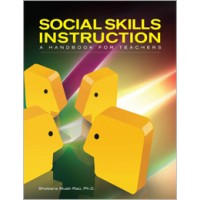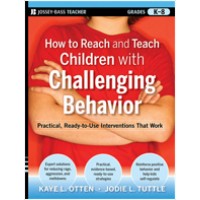Prevent, Teach, Reinforce: The School-Based Model of Individualized Positive Behavior Support [With CDROM]
| Author(s) | Glen Dunlap Ph.D., Rose Iovannone Ph.D., Donald Kincaid Ed.D, Kelly Wilson B.S., Kathy Christiansen M.S., Phillip S. Strain Ph.D., Carie English Ph.D., BCBA |
| ISBN10 | 1598570153 |
| ISBN13 | 9781598570151 |
| Format | Paperback |
| Pages | 152 |
| Year Publish | 2010 January |
Synopsis
Solve serious behavior challenges in K–8 classrooms with this easy-to-use book, the first practical guide to the research-proven Prevent-Teach-Reinforce (PTR) model. Developed by some of the most respected authorities on positive behavior support, this innovative model gives school-based teams a five-step plan for reducing problems unresolved by typical behavior management strategies.
With this thorough blueprint for PTR, education professionals will learn how to prevent behavior problems by adjusting the curriculum and environment; teach proactive communication skills; and reinforce prosocial behavior and academic achievement. This highly successful model is
- proven effective by research and field testing in real classrooms—PTR was shown to reduce behavior problems and increase evidence of social skills and academic engagement
- detailed and explicit, with five systematic steps that take educators beyond tips and strategies (see below)
- consistent with the popular positive behavior support approach and derived from the principles and many procedures of applied behavior analysis
- easily adaptable to the needs and goals of each individual student
- effective for a wide variety of students: typically developing students and those who have autism, learning disabilities, intellectual disabilities, emotional and behavioral disorders, and other challenges
On the included CD-ROM are all the printable forms and tools needed to implement PTR, such as Behavior Support Plan templates and a Functional Behavioral Assessment. With this comprehensive model, education professionals will resolve even the toughest classroom behavior challenges—and remove a significant barrier to effective teaching and student achievement.
The PTR model—5 steps to better behavior!
(1) Team building among teachers, administrators, behavior experts, parents, and other members of the student's education team
(2) Goal setting and data collection to evaluate the status of the student's behavior and ensure shared priorities
(3) PTR assessment to understand the student's behavior problems and any influencing factors
(4) PTR intervention strategies—effective individualized plans
(5) Evaluation of the effects of PTR intervention

![Prevent, Teach, Reinforce: The School-Based Model of Individualized Positive Behavior Support [With CDROM] Prevent, Teach, Reinforce: The School-Based Model of Individualized Positive Behavior Support [With CDROM]](https://www.cobee.com.sg/image/cache/data/9781598570151%20copy-800x800.jpg)



